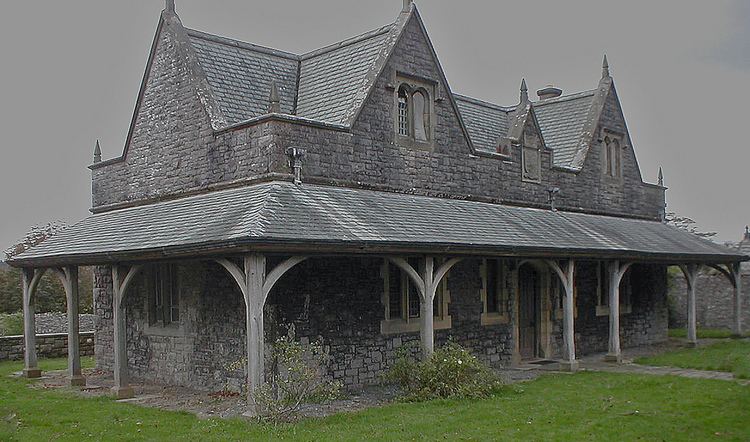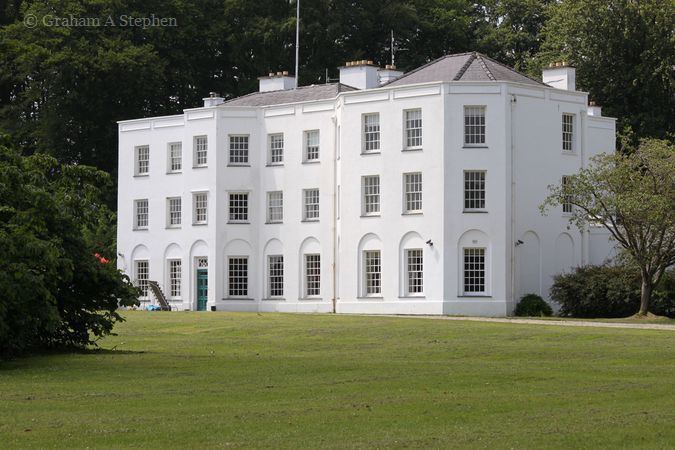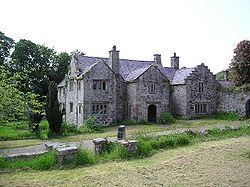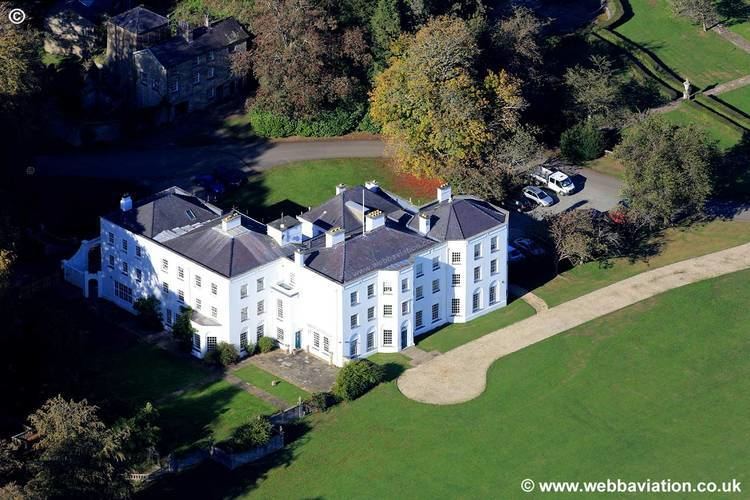 | ||
Similar Penrhyn Castle, Menai Strait, Pontrhythallt railway station, Britannia Bridge, Penrhyn Quarry | ||
Vaynol estate
Vaynol /ˈveɪnɒl/ or Y Faenol (Welsh [ə ˈveɨnɔl]) is a country estate dating from the Tudor period near Y Felinheli in Gwynedd, North Wales (grid reference SH536695). It comprises 1,000 acres (4.0 km2) of park, farmland, and gardens on the estate, with more than thirty listed buildings, surrounded by a wall which is 7 miles (11 km) long. "Y Faenol" means "the manor" and is a mutated form of the Welsh word maenol.
Contents

The buildings on the estate include two Grade I listed halls: Faenol Old Hall, much of which dates from the Williams' period of ownership, and Vaynol Hall, built in 1793 and extended during the 19th century. Once Vaynol Hall was built, Faenol Old Hall became a farm house and subsequently deteriorated; in 2003 it appeared on the BBC's Restoration programme, championed by Robert Hardy. In 2009, the BBC revisited the project, and said that Faenol Hall was now "in private ownership and has been restored". There is also a Grade I listed chapel and a very old barn on the site.

The Vaynol estate should not be confused with the neighbouring National Trust land called Glan Faenol.
Live at the vaynol
History

The estate's origins are in the 16th century when the bishops of Bangor sold property belonging to their manor, Maenol Bangor. The estate was developed during that century by the Williams family. It passed to the Crown on the death without issue of Sir William Williams in 1696. In 1723 it was presented to John Smith of Tedworth, and passed to his nephew Thomas Assheton Smith I in 1762. Assheton Smith was the 3rd largest landowner in Gwynedd. This area of Wales is known for its slate production, and the Assheton Smiths profited from slate quarrying, and owned the Dinorwic Quarry, which made a profit of £30,000 in 1856. Even after farms were let on long leases to encourage good tenant behaviour, slate was the family's main economic interest. The Assheton Smiths extended their estate through enclosure, despite strong opposition from local farmers, including the enclosure of existing properties at Gallt-y-foel.
The Assheton Smiths remained in possession of the estate until the 20th century. In 1847, it passed to Mary Astley, niece of Thomas Assheton Smith of Vaynol, who married Robert George Duff, a distant cousin of the Earls of Fife. Vaynol passed in turn to their two eldest sons (the first of whom left no son) and they took the surname Assheton-Smith instead of Duff. The younger son, Sir Charles Garden Assheton-Smith, was created a baronet in 1911. His son and grandson the 2nd and 3rd baronets, reverted to the name of Duff. Sir Michael Duff, 3rd Baronet had an adopted son, Charles, but left the estate on his death in 1980 to a nephew who sold it.
At the beginning of the 20th century, the estate amounted to 36,000 acres (150 km2) of land and had 1,600 tenants. The Prince and Princess of Wales (later King George V and Queen Mary) stayed there as guests of the Assheton Smiths during a visit to North Wales in May 1902. Within a few years, however, it became necessary to sell parts, a pattern later repeated. The main core part of the estate was put up for auction in 1984, in addition to the public sale of various properties around the estate. Caernarfon-based Glan Gwna Estates Ltd now owns the bulk of what was the main estate. The National Trust also owns much of the land of the original estate, along with many private individuals owning various properties around the estate.
In the second half of the 19th century the park had a zoo, but it was dismantled by 1900. The park has been the setting for Bryn Terfel's Faenol Festival since 2000 and in 2005 hosted the National Eisteddfod. BBC Radio 1's Big Weekend was held at the park in May 2010.
Vaynol cattle
The estate began breeding the rare Vaynol cattle, a type of White Park cattle, in the 1870s. A herd was kept there until the death of the owner Sir Michael Duff in 1980, when the estate was sold and the herd was moved to a series of locations in England.
